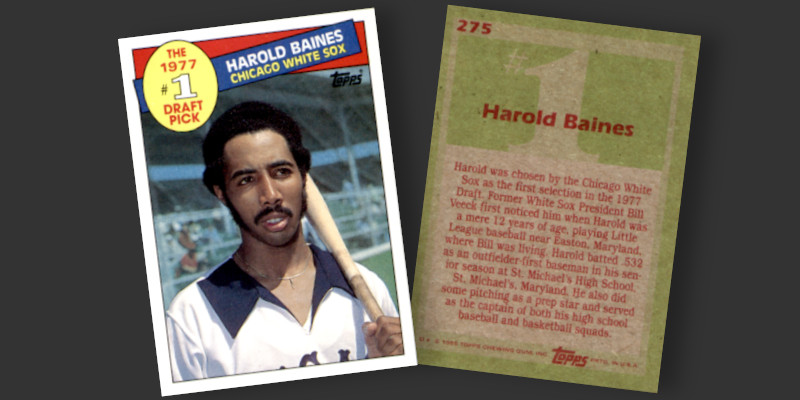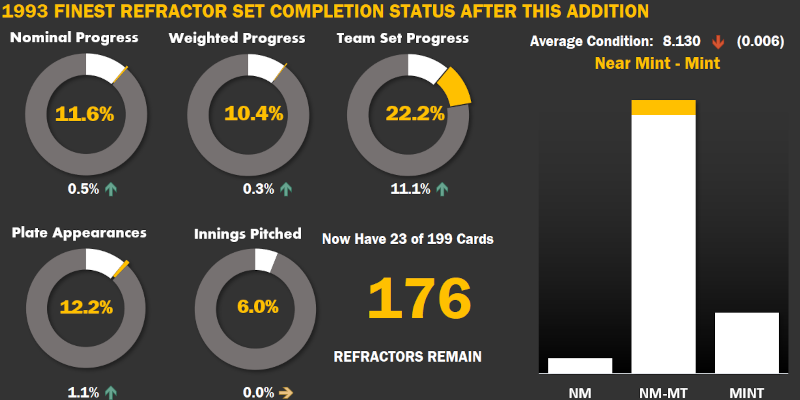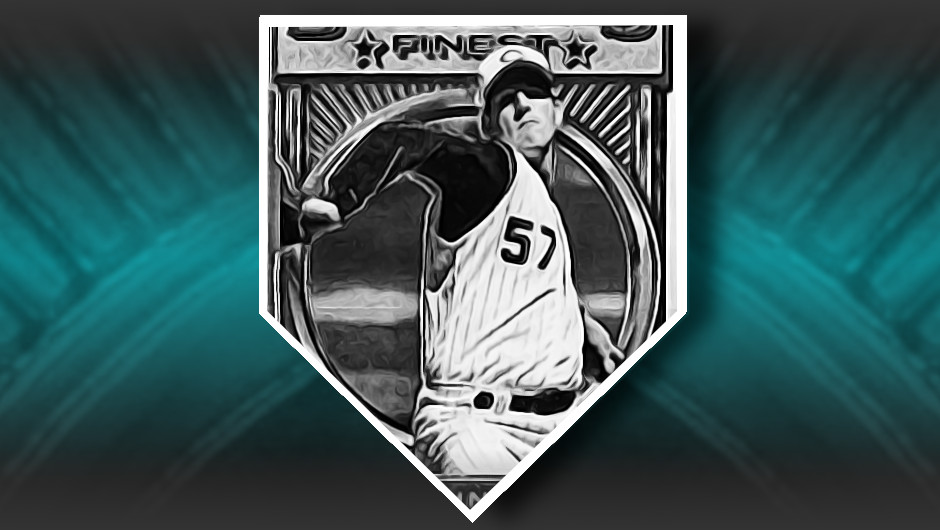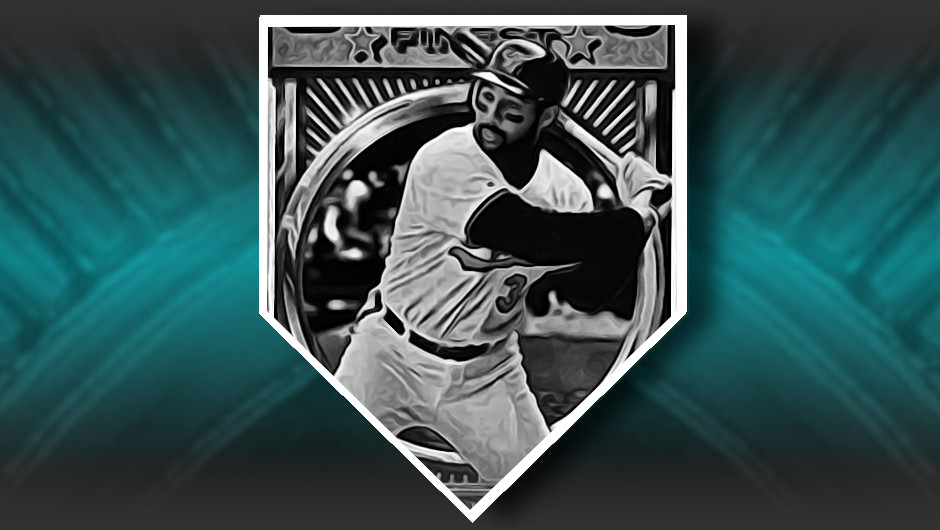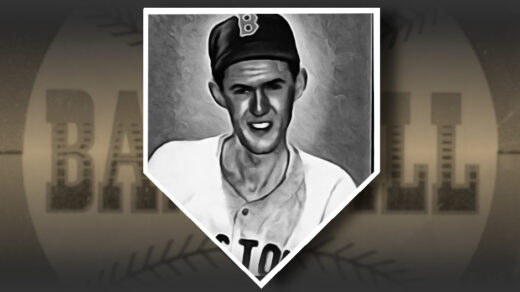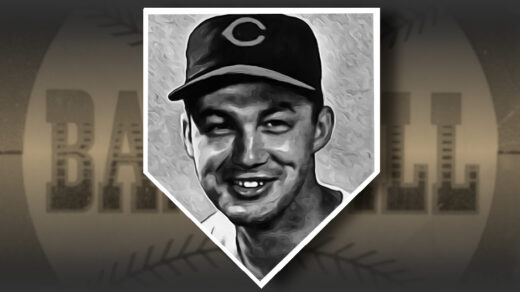Want to know one of the more difficult to find Finest Refractors? It features Harold Baines in his first season with the Baltimore Orioles and is considered the key card issued during his career. The card has the lowest graded population count (73 at the time of this writing) by far of any ’93 Refractor, making it a set-stopper for those seeking the highest grades. In fact, there are only two known to exist in Gem Mint condition. When thinking about what the tougher cards in the set would be, this one did not appear anywhere near the top of my expectations.

EXPECTATIONS
Expectations going into a situation play a pivotal role in how it is perceived coming out of it. A passable dinner at a Michelin starred restaurant is a terrible disappointment while the same at a local dive can be the highlight of a trip. Elevated expectations at the beginning of Baines’ career set baseball fans up for possible disappointment despite a very fine career. Take a look at his batting totals:
| STATS | PA | .AVG | HR | RBI | SB | BB | K% | wOBA | WAR |
|---|---|---|---|---|---|---|---|---|---|
| Career | 11,092 | .289 | 384 | 1,628 | 34 | 1,062 | 13.0% | .358 | 38.4 |
| Per 162 Games | 635 | .289 | 22 | 93 | 2 | 61 | 13.0% | .358 | 1.6 |
Over the course of his career he hit nearly 400 home runs, logged nearly 3,000 hits, and maintained a batting average within sight of .300. Work stoppages in 1981 and 1994 may have cost him a shot at some of these big, round numbers. He drove in 835 runs in the 1980s and another 748 in the 1990s. At age 40 he hit 25 home runs and logged more than 100 RBIs. He has more RBIs than Chipper Jones, Mike Schmidt, and Jeff Bagwell. This is a fantastic performance for almost any player, particularly one who had good rapport with fans and steered clear of the PED taint affecting so many others.
The view changes when one considers how hyped Baines was prior to his first MLB appearance. Professional scouts attended his Little League games when he was 12 years old. He was selected as the #1 overall pick of the 1977 draft ahead of the more explosive Paul Molitor. Baines performed well, but not at the level of people’s imagination when envisioning such a high profile addition to a team. He produced steady numbers but never broke out with ones that were overpowering. Baines never hit 30 or more home runs in a season, topped out with a .313 batting average, and finished 9th in his best year of MVP voting.
DESIGNATED HITTERS ARE A GOOD THING
Baines’ appearance as the designated hitter in more than 60% of his games also struck a nerve with some observers. The DH has been a part of American League baseball since 1973. I see designated hitters as a marked improvement over traditional baseball. Fans are rewarded with more opportunities to see skilled batsmen instead of pitchers pretending to belong in the batters box. No fan attends a game wanting to see sub-.200 hitters come up with regularity. Some will argue that manager skill is shown through timely replacement of pitchers when they come up to bat, but this seems to me only to get in the way of letting a good pitcher stay in the game exactly as long as needed. Those that complain see Baines as a symptom of bad baseball rules, but his offensive production shows explicit proof of an improved viewing experience.
THE HALL
Baines was elected to the Hall of Fame in 2018 in a controversial call that saw him become the newest iteration of “if they let him into the Hall then they should let in [name of favorite player].” There was something discordant about the selection given fans’ expectations of the stats needed to get into Cooperstown. The influence of Tony LaRussa was certainly felt, giving the vote a tinge of Old Boys’ Networking rather than raw idealism.
Baines isn’t an all-time great that dominated the sport. He is, however, one of the game’s better players and a superb candidate for the “Hall of Very Good.” With stats more akin to fan favorites like Dave Parker (outside the Hall) and Tony Perez (just inside it), I think views on Baines’ inclusion says more about what fans want the Hall of Fame to represent. His production doesn’t quite measure up to my personal view of the Hall, which I would pare down by more than a hundred players. For those that see him as a worthy member of Cooperstown, he is one of many more that should be let in. That wouldn’t be a bad thing.

Upping the Fashion Game
I really like my refractor, but the all-time greatest piece of cardboard ever to depict Harold Baines was issued in 1985. He is shown earlier in his career in a period in which the Chicago White Sox experimented with some interesting uniform designs. A collection of his cards presents probably the best overview of these fashion trends and should start with the ’85 Topps Draft Picks subset. The only thing missing from a run of ’80s Chicago Harold Baines cards is one showing the time the team tried playing in shorts.
